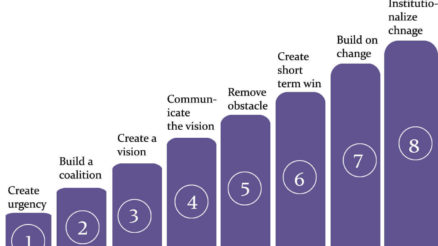Healthcare industry has witnessed massive change in recent years.
Healthcare industry is transforming and introducing new processes, system and updated technology to cater to the needs of patients.
Since managing these changes require specialized skills and knowledge therefore role of change management is important in healthcare.
In this blog, we’ll explain why is change management important in healthcare, what are key approaches to deal with managing these changes and some examples of changes that are being implemented in healthcare industry.
Let’s discuss these concepts in detail
Importance of change management in healthcare
Change management in healthcare is vital to the success of healthcare organizations. There’re several reasons that explain importance and relevance of change management in healthcare:
Improving patient care
The first step of change management process is to identify those areas where improvement can be made by introducing changes, new system and process. By identifying areas for change and implementing changes to address problems, healthcare organizations can provide better and more efficient care.
Enhancing efficiency
Change management can help healthcare organizations streamline their processes that leads to greater efficiency and cost savings. Change management can involve implementing new technologies or systems that automate certain processes. For example, the implementation of an electronic health record system can automate the process of collecting and storing patient information that reduces the need for manual data entry and risk of errors.
Keeping pace with advances
The healthcare industry is constantly evolving, with new technologies and treatments being developed. Change management can help healthcare organizations stay up-to-date with these advances and adapt to new ways of providing health care.
Meeting regulatory requirements
Healthcare organizations must comply with a wide range of regulations, and change management can help them stay in compliance by identifying and addressing areas where they may be out of compliance. And organizations are in better position to adopt to new systems, policies and regulatory mechanism with the help of following principles of change management.
Improving organizational performance
Change management can help healthcare organizations to achieve their strategic goals and objectives, improve the quality of services and products, increase customer satisfaction and employee engagement, and ultimately improve the overall performance of the organization.
03 Approaches of Change Management in Healthcare
Following are three approaches of change management being followed in healthcare industry:
Top-down approach in change management in healthcare
The top-down approach in change management in healthcare is a method where change is initiated and driven by the leaders or top management of the organization. This approach involves creating a clear vision and strategy for the change, communicating it to the employees and other stakeholders, and providing the necessary resources and support to implement the change.
The top-down approach provides a clear direction and goals for the change, which can help employees understand the reasons for the change and their role in implementing it. This approach also has stronger commitment from leadership and thus change is implemented at fast paced. However, this approach often face resistance from employees as they have no say in entire change process.
Bottom-up approach in change management in healthcare
The bottom-up approach in change management in healthcare is a method where change is initiated and driven by employees or front-line staff. This approach involves gathering input and ideas from employees and other stakeholders, and involving them in the planning and implementation of the change.
This approach has many advantages. First, there is greater buy-in and commitment of employees as they are involved in planning and implementation process. They have better understanding of the problems and issues so they’re instrumental in identifying areas of improvement and changes. This approach leads to greater employees’ engagement and motivation as they feel valued and their voices are being heard.
Collaborative approach in change management in healthcare
The collaborative approach in change management in healthcare is a method where change is initiated and driven by a partnership between leaders and employees. This approach involves actively seeking input and ideas from both leaders and employees, and involving them in the planning and implementation of the change.
Employees are more likely to be invested in the change and support it if they have been involved in the planning and implementation process. By involving both leaders and employees in the change process, a more comprehensive understanding of the problem can be achieved. This leads to greater employee engagement and motivation, as employees feel that their contributions and ideas are valued. Employees and leaders may be more likely to identify potential obstacles or challenges that need to be addressed during the change process.
Examples of change management in healthcare
Here are few successful examples of implementation of change management in healthcare organizations:
Example 1: Implementation of electronic health records
One successful example of change management in healthcare is the implementation of electronic health records (EHRs). The traditional hospital system often faces challenges with paper-based manual medical records. This causes flaws in medical records causing inefficiencies, inaccuracies, and lack of accessibility.
Many of hospitals system has been switched to an EHR system to address these issues and improve patient care.Adopting EHR system involve identification of specific needs, explaining change to stakeholders, communicating proposed changes and helping employees to adopt to new changes.
The implementation of the EHR system led to significant improvements in the hospital’s operations. It improves efficiency by saving cost and providing accurate patient information. It also increases accessibility of medical records. All in all, due to this new system there is lot of improvement in patient satisfaction and employee engagement.
Example 2: Redesign of a hospital’s patient flow
Another successful example of change management in healthcare is the redesign of a hospital’s patient flow. Many hospitals face challenges with patient flow, including long wait times in the ED, bottlenecks in the inpatient units, and a high rate of patient readmissions.
To address this problem, a new the patient flow process is designed to improve patient care. Key features of this new system include a triage system to prioritize patients in the ED based on the severity of their condition. It also streamlines the process of transferring patients between the ED and inpatient units. It also increases the number of beds in the ED to reduce overcrowding. It also includes a discharge planning process to improve the transition of patients from the hospital to home or other care settings.
Change management helps healthcare teams to implement this system smoothly by involving all stakeholders in designing and providing training and support to help them adapt to the changes.
This new system reduces wait times in the ED, which improved patient satisfaction and reduced patient stress. It improves efficiency in the inpatient units that lead to an increase in the number of patients.
It also reduces readmission rates, which leads to cost savings for the hospital and improved patient outcomes.
Final Words
In today’s rapidly changing healthcare environment, effective change management is essential for healthcare organizations to remain competitive, improve patient care, and adapt to new challenges. By implementing change management best practices, healthcare organizations can improve their performance and outcomes, and ultimately provide better care to patients.
The examples of change management in healthcare discussed in this post, such as the implementation of electronic health records and redesign of a hospital’s patient flow demonstrate the potential for significant improvements in patient care and outcomes through successful change management.



